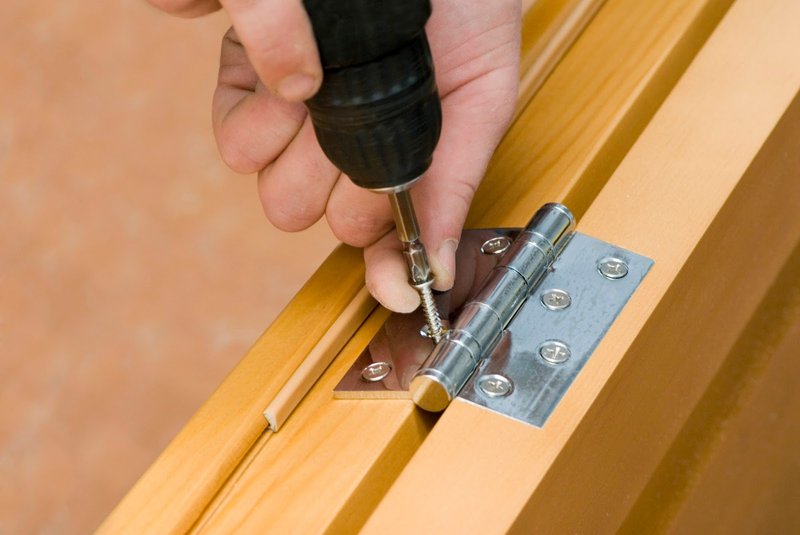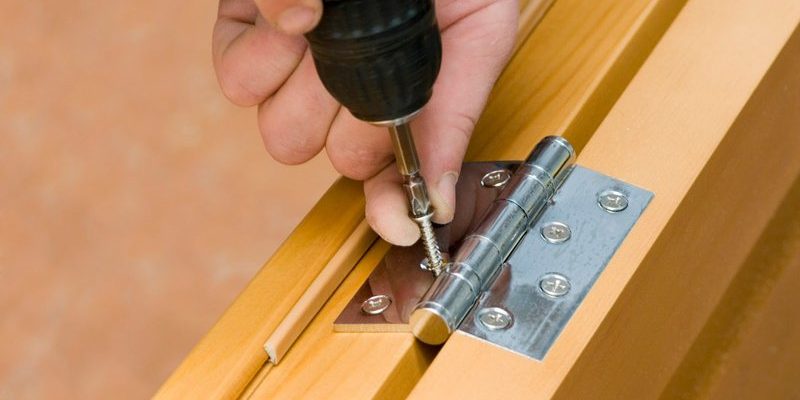
Here’s the thing: a binding exterior door isn’t just an inconvenience. Left unchecked, it can wear out your door, damage the frame, or leave your home less secure. So, how do you figure out what’s wrong with the hinge, and what can you do about it? Let me walk you through the process in plain language—no special skills or jargon required.
What Causes an Exterior Door to Bind?
If your door is binding—meaning it’s scraping, sticking, or won’t close without a push—it’s not just bad luck. Most exterior doors rely on a set of strong hinges, and when these go out of alignment, things get dicey. Sometimes the binding shows up suddenly, especially after a weather change or a heavy slam. Other times, it creeps up as the hinge screws loosen or the door settles over months or years.
You might be wondering, “Why does it always seem to bind on just one side?” Here’s where troubleshooting comes in handy. Usually, binding means that one side of the door is rubbing against the frame while the other has a gap. It could be that the top or bottom hinge is out of sync, or the hinge itself is bent, corroded, or missing a screw. Compared to something like a finicky TV remote, tight door hinges are often easier to diagnose, since you can see and feel what’s going wrong.
Quick insight: Exterior doors deal with a lot—wind, rain, heat, and ordinary use. Even the highest-end doors and hinges (think Pella, Therma-Tru, or Masonite) can start binding eventually.
Let me explain: If your door worked perfectly last month but is now catching at the bottom or side, try to remember what’s changed. New carpet? Did you have a big storm or temperature swing? Even a shift in humidity can make wood swell and push hinges out of alignment.
How to Check If Your Door Hinge Is the Problem
The first step in troubleshooting an exterior door hinge is to figure out if the hinge is actually the cause. Here’s how to do a quick but effective check:
- Open and close the door slowly. Where does it start to stick? Is it scraping at the top, bottom, or along just one side? This tells you where to look.
- Look at the hinge leaves (the flat metal parts attached to the door and frame). Are they flush with the surfaces, or does one look crooked or pulled away?
- Give the door a gentle lift by the handle when open. If you feel a lot of vertical play, you might have loose or worn-out hinge pins.
- Check for missing or stripped screws. Sometimes, just one bad screw will cause the whole door to sag or bind.
Honestly, most of the time you’ll spot the issue pretty fast. If you see a gap where the hinge should be tight, or if the screws spin freely without gripping, you’re on the right track. If the hinges look fine but the door is still binding, the problem might be somewhere else—like a warped door or a shifted frame. But nine times out of ten, it’s a hinge issue.
Common Reasons a Hinge Causes the Door to Bind
When it comes to troubleshooting, there are a handful of classic hinge problems that cause exterior doors to bind on one side:
- Loose hinge screws: Over time, the screws holding the hinge to the door or frame can work themselves out, making the door sag and bind.
- Bent or damaged hinges: Maybe you moved something heavy, or the door was forced open. A bent hinge will pull the door out of alignment, usually causing scrapes at the top or bottom.
- Settling or shifting of the frame: Sometimes it’s not the hinge itself but the door frame. Weather, moisture, or settling foundations can move things just enough to cause binding.
- Paint or debris in the hinge: Paint buildup or tiny bits of debris can keep the hinge from closing all the way, leaving the door crooked.
You might be thinking, “But my hinge looks fine!” Don’t be fooled. Even small misalignments—think fractions of an inch—can make a big difference. If your door used to close with a satisfying click and now drags, don’t ignore it. A little troubleshooting now beats a full-door replacement later.
How to Fix a Door Hinge That’s Making the Door Bind
Once you’ve pinpointed the hinge as the troublemaker, you can start fixing things. Here’s a simple process for most exterior doors, whether you’re dealing with a classic Schlage setup or a modern smart-lock door:
- Tighten all hinge screws: Use a screwdriver (not a drill, if you can help it) to snug up every screw on both the door and frame sides. Stripped screws? Switch them for longer ones that can bite into solid wood.
- Check the hinge pins: If the door squeaks or wobbles, pop out the hinge pins and see if they’re bent. A quick swap with a new pin can solve the issue.
- Straighten bent hinges: Gently tap the hinge with a hammer and a wood block, or replace the hinge entirely if it’s badly bent.
- Remove paint or debris: Scrape out any gunk in the hinge recess with a utility knife or flat screwdriver.
- Test and repeat: Try the door after each tweak. Sometimes, a small adjustment is all it takes.
Tip: For especially stubborn screws that won’t hold, fill the hole with a wooden matchstick coated in wood glue, then insert the screw again. This old trick gives the screw something to grip!
Let me explain why this order matters: Sometimes tightening the screws solves everything, and you never need to mess with the hinge itself. If things still aren’t right, take the hinge off, inspect for damage, and replace if needed.
Advanced Troubleshooting: When Simple Fixes Don’t Work
So, you’ve tightened every screw, checked every hinge, and your door still binds. Now what? Here’s where advanced troubleshooting comes in. Sometimes, the problem runs deeper—like a swollen door after a rainstorm, or a door frame that’s shifted just enough to throw everything off.
- Check the frame with a level: If your door frame is out of plumb, even perfect hinges can’t save you. Place a carpenter’s level along the hinge side and the top to check for straightness.
- Look for swollen wood: Exterior doors, especially wood ones, absorb moisture and can swell. Feel for spongy spots or visible bulges.
- Inspect weather stripping: Sometimes thick or misplaced weather stripping can push the door off course and cause binding as you try to close it.
- Consider hinge shimming: If one hinge sits deeper than the others, you might need a thin cardboard shim behind the hinge leaf to even things out.
Honestly, at this stage, patience pays off. Work slowly and methodically. Sometimes you’ll discover a combination of issues—a slightly bent hinge, a bit of swollen wood, and a loose screw. Fixing just one may not solve the whole problem, but tackling all at once usually does the trick.
Should You Replace, Reset, or Repair the Hardware?
You might be torn between replacing your door hardware or just making a quick repair. Here’s how to decide:
- If the hinge is badly rusted or cracked, replacement is your best bet. Modern hinges aren’t expensive, and it’s an easy swap even for a beginner.
- If screws won’t hold even after repair, try using longer screws or filling the holes before deciding on a full replacement.
- If a smart lock or code-enabled hardware is involved, double-check the instruction manual. Some newer hinges or integrated locks (like from Yale or Kwikset) have special install steps and reset procedures that can’t be skipped.
In some cases, just resetting the hinge by removing and reinstalling it—making sure everything lines up nice and square—will bring your door back to life. If you’re troubleshooting a door with electronic or battery-powered hardware, always disconnect or remove the battery first so you don’t accidentally trigger a lockout or reset the code.
Insight: Sometimes dealing with universal hinges is simpler, as they’re made to fit most brands. Brand-specific hinges might require an exact match for replacement, especially on storm or security doors.
Comparing DIY Fixes vs. Calling a Pro
Let’s be real: not every exterior door hinge problem is a quick DIY job. Most are, but there are times when calling a professional makes sense—especially if you’re dealing with an older home, custom door, or advanced locking system.
- DIY fixes work best if the problem is obvious—a loose hinge, stripped screw, or minor sag.
- Call a pro if you notice structural damage, severe swelling, or if the door frame itself needs resetting. Also, if you’re troubleshooting a smart door with a complicated sync or pairing process, sometimes it’s worth paying for peace of mind.
- Budget: Hiring help can cost more, but it guarantees the fix is safe and up to code, especially with entrance doors that impact your home’s security.
Honestly, even if you’re a beginner and a little nervous, it’s worth trying to troubleshoot the hinge first. Most problems won’t require special tools—just a screwdriver, some patience, and a willingness to learn as you go.
Tips for Preventing Door Binding in the Future
Once you’ve got your door moving smoothly again, it’s smart to spend a minute thinking about prevention. Taking care of hinges isn’t complicated, but a little attention now can save you a return trip with the screwdriver later.
- Lubricate hinges annually with a silicon-based spray or light oil. Avoid heavy grease, which attracts dirt and dust.
- Check screws every season, especially after big weather swings or if you hear squeaking.
- Paint carefully around hinges, and never paint over the hinge itself—this traps moisture and leads to binding or rust.
- Inspect weather stripping and thresholds to make sure nothing is pushing your door out of alignment.
Bottom line: The door on your home gets more use than just about anything else. Investing a little time in hinge care now pays off in fewer headaches (and repairs) later.
Closing Thoughts
Troubleshooting an exterior door hinge that’s causing the door to bind on one side is like solving a little puzzle—it takes some careful observation, a bit of patience, and a few simple tools. Whether you’re working with a brand-new entry or an old favorite, most binding problems can be fixed with basic adjustments. Remember, the hinge is usually the hero or the villain in this story. Give it some attention and respect, and your door will swing smoothly for years to come. If you ever get stuck, don’t hesitate to ask for help—but most of the time, you’ll be able to handle it yourself and feel a little handier along the way.
